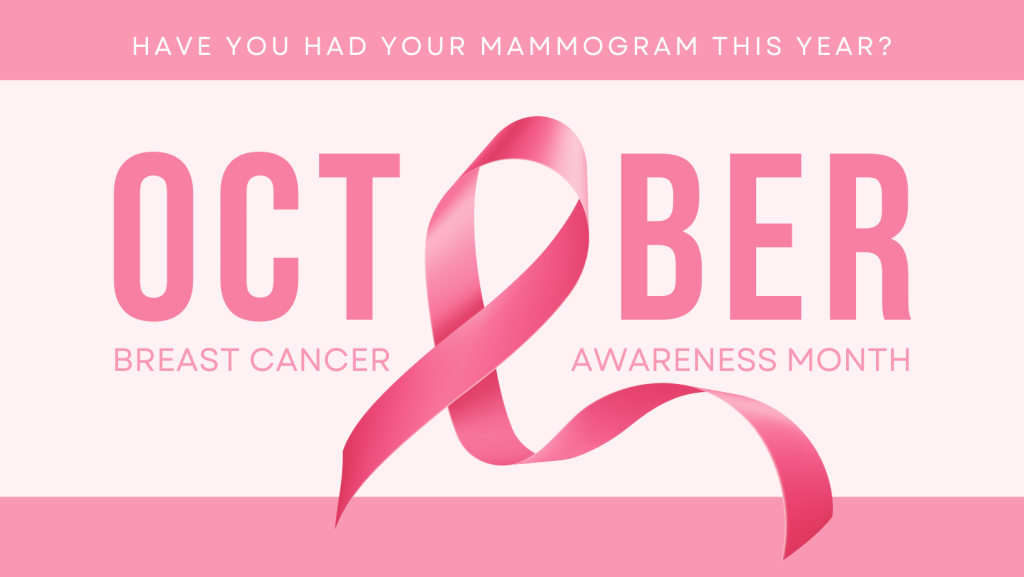South Health District recognizes Breast Cancer Awareness Month

VALDOSTA – Breast cancer remains the second most common cancer among women in the United States according to the Centers for Disease Control and Prevention. Each year in the United States, about 264,000 cases of breast cancer are diagnosed in women and about 2,400 in men. About 42,000 women and 500 men in the U.S. die each year from breast cancer.
The Georgia Department of Public Health’s South Health District is committed to providing education on the importance of breast cancer screenings, early detection and healthy living, especially during Breast Cancer Awareness Month.
Through South Health District’s Breast and Cervical Cancer Program, women who are Georgia residents, uninsured or underinsured and low-income, and who are 40 to 64 years of age can get clinical breast exams, pelvic examinations, pap smears (if needed), and mammogram referrals.
“Early detection is critical when it comes to treating breast cancer,” said Missy Sims, R.N. Women’s Health Coordinator. “While it is not something that anyone wants to think about, breast cancer could happen to anyone. That is why we want to make sure everyone has access to screenings, no matter their income level or insurance status.
For individuals who are unsure of their risk, the CDC explains that the risk of developing breast cancer is influenced by many factors, such as:
- Getting older. The risk for breast cancer increases with age; most breast cancers are diagnosed after age 50.
- Genetic mutations. Inherited changes (mutations) to certain genes, such as BRCA1 and BRCA2. Women who have inherited these genetic changes are at higher risk of breast and ovarian cancer.
- Reproductive history. Early menstrual periods before age 12 and starting menopause after age 55 expose women to hormones longer, raising their risk of getting breast cancer.
- Having dense breasts. Dense breasts have more connective tissue than fatty tissue, which can sometimes make it hard to see tumors on a mammogram. Women with dense breasts are more likely to get breast cancer.
- Personal history of breast cancer or certain non-cancerous breast diseases. Women who have had breast cancer are more likely to get breast cancer a second time. Some non-cancerous breast diseases such as atypical hyperplasia or lobular carcinoma in situ are associated with a higher risk of getting breast cancer.
- Family history of breast cancer. Women (as well as men) who have a first-degree relative (mother, sister, daughter, father or brother) with a history of breast cancer have two times higher risk of developing breast cancer compared to those who do not have this family history.
As with many types of cancer, medical experts do not know exactly what causes breast cancer, but they do know that early detection and healthy living can offer some protection.
The following are recommendations to help reduce your risk of breast cancer:
- Getting regular physical exercise.
- Maintaining a healthy weight.
- Choose not to drink alcohol, or drink alcohol in moderation.
- If you are taking, or have been told to take, hormone replacement therapy or oral contraceptives (birth control pills), ask your doctor about the risks and find out if it is right for you.
- Breastfeeding your children, if possible.
- If you have a family history of breast cancer or inherited changes in your BRCA1 and BRCA2 genes, talk to your doctor about other ways to lower your risk.
If you are a woman between 40 and 64 years of age and do not have health insurance or the resources to get a mammogram, you may be eligible to receive the health screenings you need at no cost through the Breast and Cervical Cancer Program. To learn more about BCCP, call your local health department or our website at www.southhealthdistrict.com/BCCP.
Remember, the best protection is early detection!
